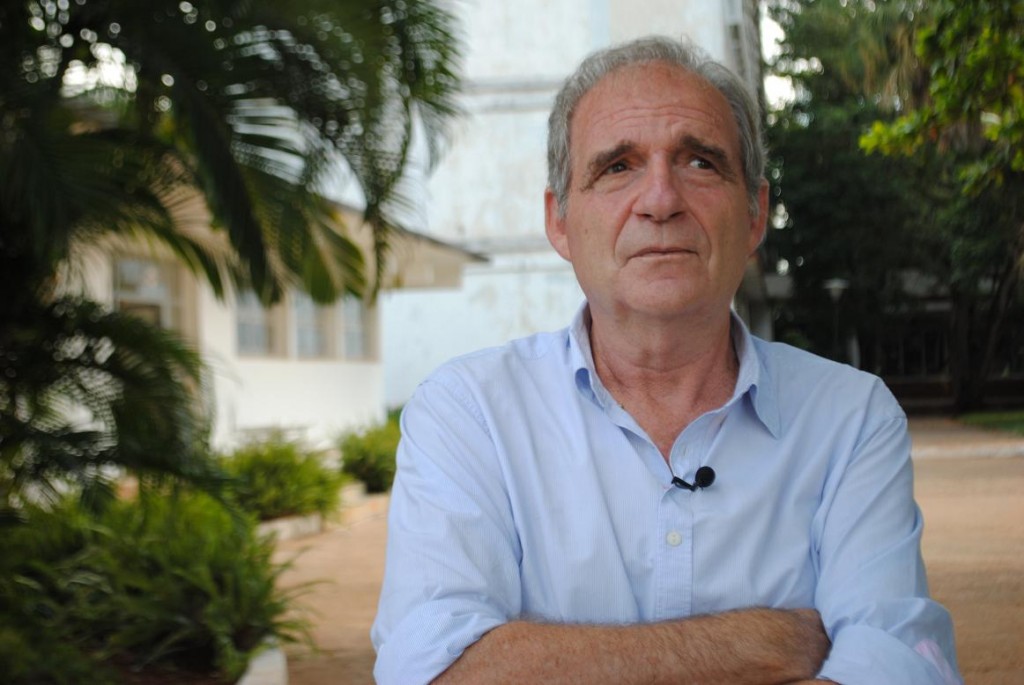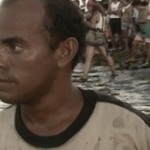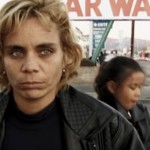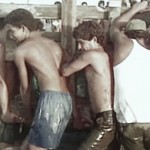
‘Balseros’: Tracking a wild horse
HAVANA — When Carles Bosch visited Havana in 1994, the city showed him its worst face. He arrived from Spain as a correspondent for Catalonian Public Television, to do a report on the emigration crisis that at the time was further souring the already sour relations between the United States and Cuba, hurting Cuban families.
Luck (or perhaps what some call “a nose for news”) led him to Juan Carlos, Misclaida, Méricys, Oscarito, Miriam and Guillermo, seven of the more than 30,000 Cubans who that year took to the sea to reach the other side of the Florida Straits.
The journalist never suspected that those people would star in his first film, “Balseros” [Rafters]. The power of their testimonies and the skill with which the characters’ experiences were woven earned Bosch and photographer Josep María Doménech, the movie’s co-director, an award for Best Foreign Documentary at the 24th International Festival of New Latin American Cinema in Havana, and even an Oscar nomination.
https://www.youtube.com/watch?v=5blHIUIVxsU
Two decades after the filming, the filmmaker returned to Cuba to begin a “re-encounter” with what possibly was his best story. Listening to him talk, one suspects that in reality he never managed to distance himself from those experiences.
Nelson González Breijo: How did the idea to make a movie about rafters come up?
Carles Bosch: I filmed in the Cuban capital at the height of the 1994 emigration crisis. Then I received permission to film at the U.S. Naval Base in Guantánamo, where I ran into the characters to whom luck had introduced me in Havana.
One year later, after they were finally allowed to travel to U.S. soil, the television company I worked for sent me to cover the event. Each one of those stages provided material for a report of the kind that — three days after being broadcast — mean nothing because they cease to be news.
Five years later, I discovered something that I hadn’t seen earlier, something that went beyond the origin of those people or the economic crisis. I became aware of the great changes that were taking place in the lives of these people, from the boy from Havana who ended up shouting “Hallelujah!” in an evangelical church in the United States to the girl who wanted to be a model and ended up selling crack in New Mexico.
The subject was a lot more universal: the madness of mounting a wild horse, such as emigration. Not the emigration that you could do if you went to Spain to study for three years, or me being hired in some other country. I’m speaking of the phenomenon entered by anyone who feels that “If I don’t move to another country, my family won’t survive.”
The emigration from Cuba to the U.S. in 1994 was essentially economic. If it had been political, I wouldn’t have a movie.
NGB: The documentary manages to bring together television’s journalistic tradition (which tends to record major events) with a reflexive and well-preserved cinema esthetic. How did you come to the point where cinema and journalism meet?
CB: I love ordinary reporting, of the kind where you arrive someplace and the TV station that sends me expects a report that same night. Or spending 15 days in a war zone, editing tape under fire, for a 30-minute audio-visual to be broadcast on a specific date, because otherwise it loses its meaning and becomes yesterday’s news.
But at the same time, we all have a creative side, and in my case it might be pure journalism but not a spot-news reportage.
With “Balseros,” I got an Oscar nomination, and people asked: “How did you manage that with your first movie?” Ah, because I’ve spent a lot of years working in television doing reportages for a large audience.
To grab the viewer in the kind of space that is not telly-trash, one has to have great creativity, along with pure and hard journalism.
As you go along, you learn some “tricks” to keep the viewer interested in your story. Very few viewers will sit through a half-hour report on Alzheimer’s, for example. But if you present it through three characters, the viewer wants to know more about them and ends up learning about the topic.
NGB: In ‘Balseros,’ you clearly elected to tell the story through the characters.
CB: Yes, I’ve become accustomed to this treatment, as well as the use of chronology. They are two values that work well in tandem. One character, after a few days, may have to make a decision, but, when the time comes, you need the spectator to have an idea of what that character is all about and why he makes that choice or some other.
That treatment, which is the ABC of any fiction script writer, can also have very good results in the field of documentaries or reportage.
Cinema is also a spectacle. In a documentary, you have to inform, but you also have to make the viewer feel other pleasures that may be more common in other art forms.
NGB: One of the dramatic resources most often used in your film is the video letter. Was that a voluntary choice or was it imposed to you by the dynamics of filming?
CB: Had I used it in some other type of audio-visual, it might be questionable. But in the case of these Cubans who went to the United States, with the problems in communication that existed (and still exist) between both countries, it’s commonplace for any traveler to perform as a messenger.
A journalist is an ordinary person who is filming other ordinary persons. The viewer is not dumb. He knows that a relationship is produced that is not necessarily friendship, but every time I met with my characters or their families, they embraced me effusively. I meant something to them, perhaps one of their last recollections of Cuba, or their relationship with a distant son.
The resource is nothing more than a show of transparency in the filming process.
The case of Miriam is very revealing. When she arrived in Miami, she had spent one year without seeing her daughter. She had spent all that time in isolation at the U.S. Naval Base at Guantánamo. Well, I filmed the daughter in Cuba and then went to visit Miriam.
I showed her the images on a television set. She was amazed. She had never seen her daughter walk. Suddenly, the little girl stumbled, and Miriam lunged toward the TV set to keep her from falling. Not even the best fiction script writer would have come up with that.
NGB: Your rapport with the characters is evident. How much of an ethical conflict was it to reveal their fates, bearing in mind that many of them are not ‘winners’?
CB: That’s a huge question. That’s a constant moral problem for anyone who engages in reportage and documentary filming. My characters knew what they were doing. That seems basic to me. Their awareness of the process is evident throughout the movie.
Anyway, the destination of many characters did not depend on them, in the first place. The lady who placed them when they arrived in Miami possibly had more responsibility. They are people who left their homeland with great hopes. It pains me to see how some of them ended up, but who am I to judge whether they acted properly or not?
NGB: Twenty years after the rafters crisis, how do you see the way cinema has treated the topic?
CB: It’s a complex issue. To me, I was greatly satisfied that the documentary was appreciated on both sides of the conflict. The movie won at the Havana Festival and then went on to the Sundance Festival [in Utah] and to Miami.
Recently, I saw “One Night” (Lucy Mulloy, 2012) and I can tell you that it looked very real to me. Havana has a charm that makes it appear very real in movies. It’s a pity that the Cubans haven’t explored that topic further.
NGB: What is your current relationship with the characters?
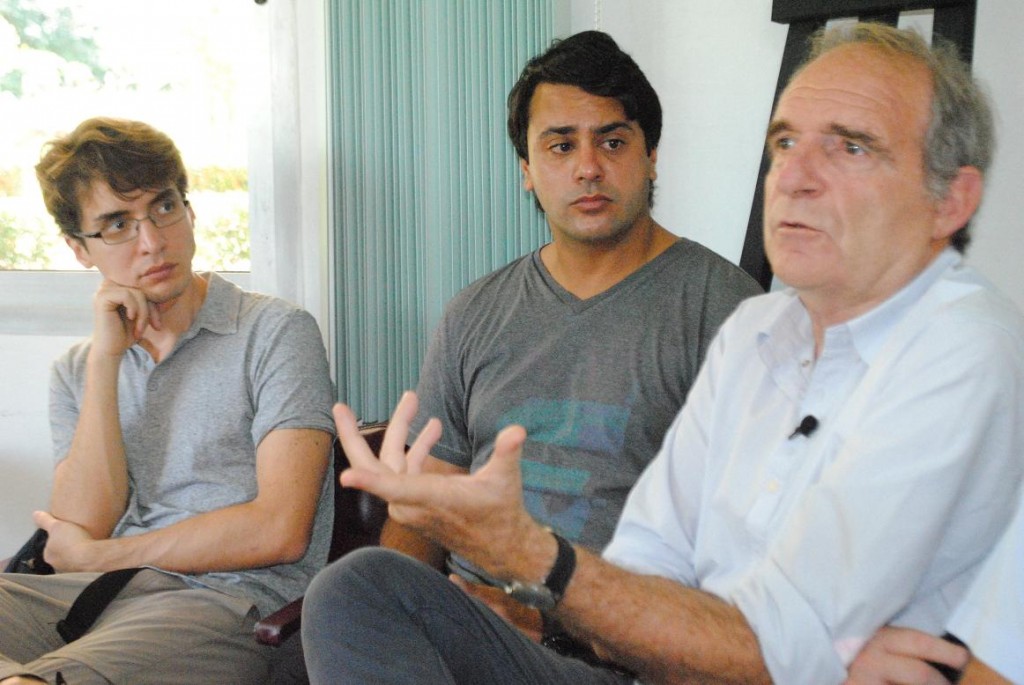 CB: Right now I am in Cuba at the invitation of “Profession: Reporter,” a news program of O Globo-TV, which is doing a 30-minute documentary about the filming of “Balseros,” my relationship with the characters and their situation at present.
CB: Right now I am in Cuba at the invitation of “Profession: Reporter,” a news program of O Globo-TV, which is doing a 30-minute documentary about the filming of “Balseros,” my relationship with the characters and their situation at present.
Here, we talked to some of the relatives. Later this month, we’ll go to the United States, because the program will be aired next month.
About the characters, I learned that Juan Carlos is doing fine. He helps his family and has not lost his roots. But others have become disconnected from their relatives in Cuba, who are hoping that we can bring them news. That’s the case with Rafael’s mother, who doesn’t know where he is at present, and the mother of Méricis and Misclaida.
NGB: Any immediate project?
CB: In Spain we’re going through a tremendous crisis, affecting the economy and our freedom of expression (they usually go hand in hand.) I’m not someone who spends all day searching for ideas, because I don’t find them that way. But who knows? Maybe an idea will come up and I’ll see it suddenly — and it might have to do with Cuba.


